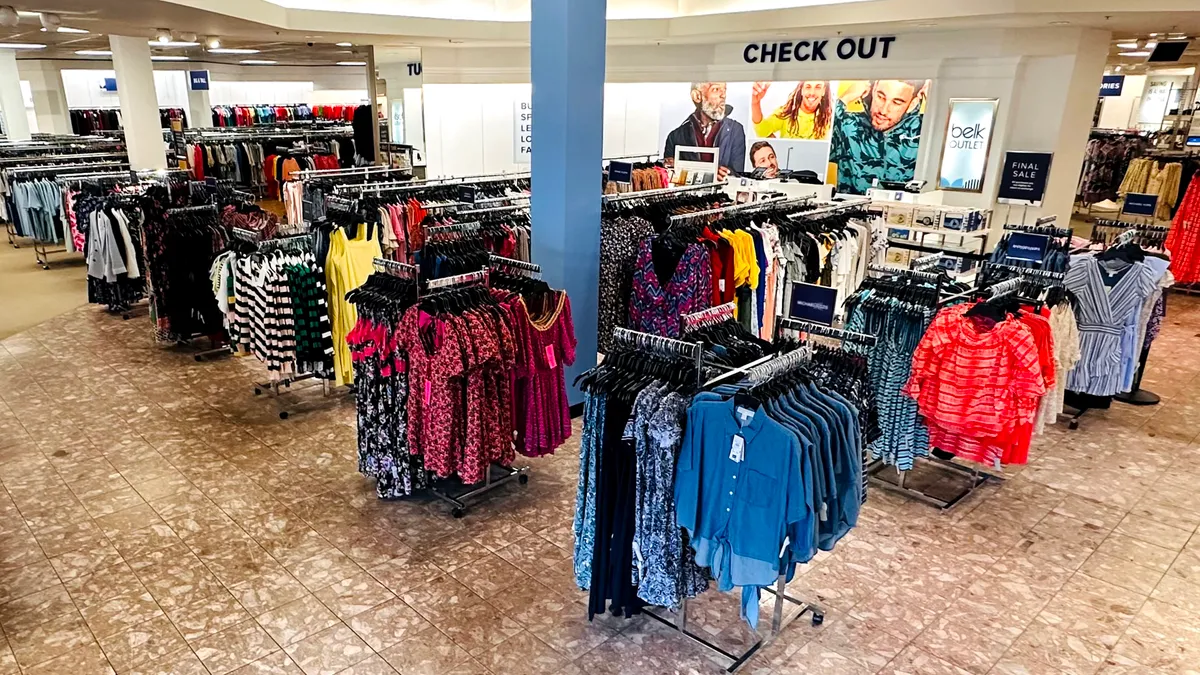Dive Brief:
-
Strong balance sheets have become even more crucial for retailers, according to a report from Moody’s Investors Service released Monday. Over the next 12 months, Moody’s expects defaults among retail and apparel to jump from 6% to 8.6%.
-
Elevated product, labor and freight costs, higher markdowns and weakening consumer spending have driven profits down, per the report. Home goods, apparel retailers and smaller companies are especially at risk.
-
With interest rates up, credit is more expensive. Therefore, because of their higher debt levels, private equity-owned retailers, including department store Belk, are particularly vulnerable, Moody’s found.
Dive Insight:
The National Retail Federation sees positive momentum, if some challenges, for retail sales in the second half of the year.
“The first half of the year is over and the economy is still moving in the right direction,” NRF Chief Economist Jack Kleinhenz said last week. “While its rhythm, tone and pattern have slowed, it has not stalled and recently revised data shows underlying strength that seems to be rolling forward.”
But Moody’s Investors Service is forecasting weak U.S. growth this year and next, “including a shallow recession in the second half of 2023.”
“Weaker, highly leveraged companies continue to have a tough time accessing capital in a market where investors remain risk averse,” Moody’s analysts led by Raya Sokolyanska said in their report.
Retailers with little financial cushion could buckle under the pressures of the current environment, where some costs are still elevated and pressure on the consumer remains intense. Those include Belk, Rite Aid, At Home and Premier Brands Group, per the report. Premier Brands and Rite Aid were among the retailers flagged by Retail Dive last year as at risk for bankruptcy.
“Many discretionary companies in the apparel and department store sectors are experiencing sales declines as consumers spend more cautiously on goods and prioritize services,” the Moody’s analysts said.
This time, the vulnerabilities extend to many specialty retailers with massive brick-and-mortar fleets, they said. Home and crafts retailers, namely At Home and Joann Stores, have lost the advantage they enjoyed during the height of the pandemic, they also said.
“Within apparel, vertically integrated retailers have been more challenged because of their reliance on large store footprints, while apparel brands have benefited from international growth and the ability to pivot across channels,” Moody’s said.
In the past 12 months, deteriorating liquidity and profitability has already claimed a few under-performing retailers, including Bed Bath & Beyond and Party City, Moody’s noted. After months of pulling various financial levers, Bed Bath & Beyond filed for bankruptcy in April. The company faltered amid a doomed effort to switch to private labels “amid supply chain disruptions and lower home-related spending,” Moody’s said.
Around the same time, Party City was continuing to shrink its footprint amid its own Chapter 11 reorganization.
“Party City filed for bankruptcy when helium shortages, supply chain disruption and softening demand led to an unsustainable capital structure and weak liquidity,” according to Moody’s.
Some challenges — like freight rates, product costs, promotional pressure and inflation — are easing, per the report. But high labor costs and weak consumer demand for discretionary goods are hurting profits, Moody’s said. Other analysts have warned that the Supreme Court’s move to nix President Biden’s student loan forgiveness program could further undermine discretionary spending, just as the back-to-school and holiday shopping periods commence.
“While we do not expect a return to the pandemic-period 22.5% peak in speculative- grade defaults, the pressures are high enough to push up distress levels closer to the 2017-2019 retail default cycle,” Moody’s analysts wrote.













